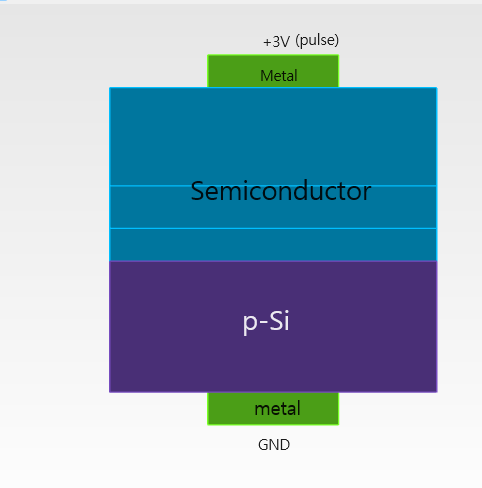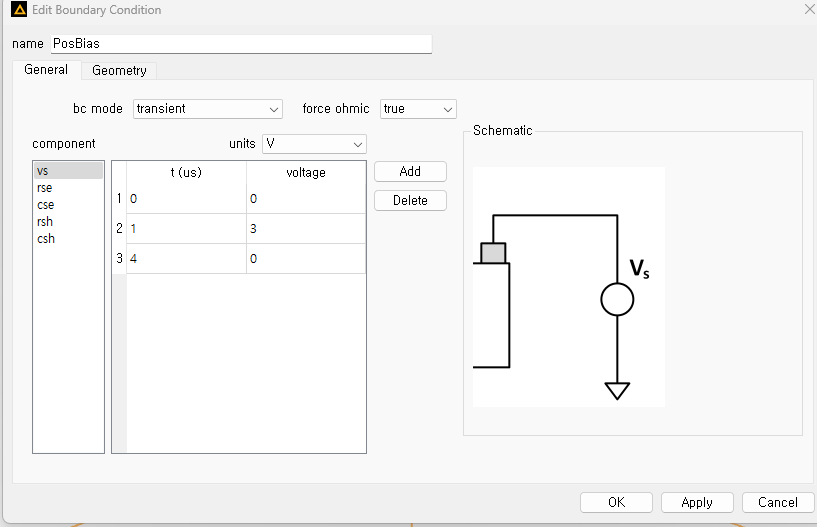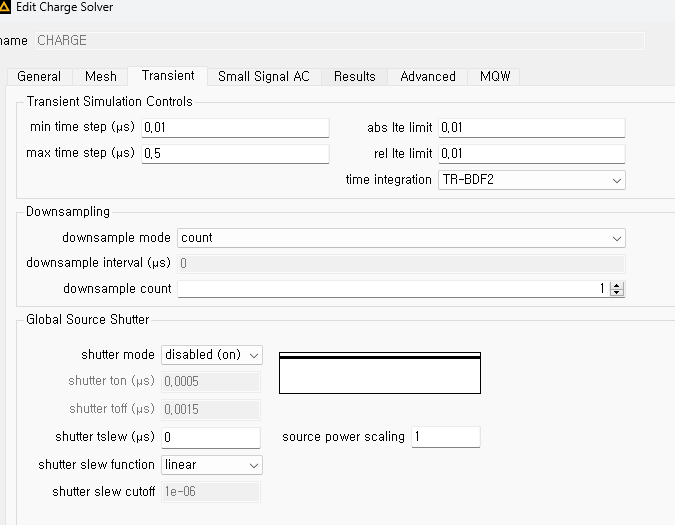-
-
November 20, 2023 at 2:30 pm
Sungmin Yoon
SubscriberHello,
Currently I'm running transient simulation in Lumerical CHARGE, to see semiconductor device's electron & hole behavior as a function of time.
Structure is as follows: Metal/Semiconductor/p-Si/Metal.
Positive bias is applied in the form of pulse to one metal contact for 3 us, and ground is applied in the other metal contact.
I reffered to this article, seems that it's not quite adquate to my situation but anyway, it dosen't work. Modulated 'init. step size' to minimum, turned on 'gradient mixing'.
Problems are as below:
- Diverge at t=0, if I set 'convergence method' as 'limit update'
- Diverge at t=10ns, if I set convergence method as 'linear search cubic' or 'linear search bank rose'.
Meshing is fine.
Here's the geometry and settings:
Regards,
Sungmin
-
November 24, 2023 at 12:07 am
Amrita Pati
Ansys EmployeeHi Sungmin,
I will come back to you when I hear back from the R&D team on this post as well.
Regards,
Amrita -
November 24, 2023 at 12:16 am
Sungmin Yoon
SubscriberMuch appreciated, Amrita.
Just so you know, like previous post, the theree layers as 'Semiconductor' titled in caputred image, those are actually "oxide-nitride-oxide".
Thanks,
Sungmin
-
- The topic ‘Divergence issue for CHARGE transient simulation’ is closed to new replies.



-
4838
-
1587
-
1386
-
1242
-
1021

© 2026 Copyright ANSYS, Inc. All rights reserved.











